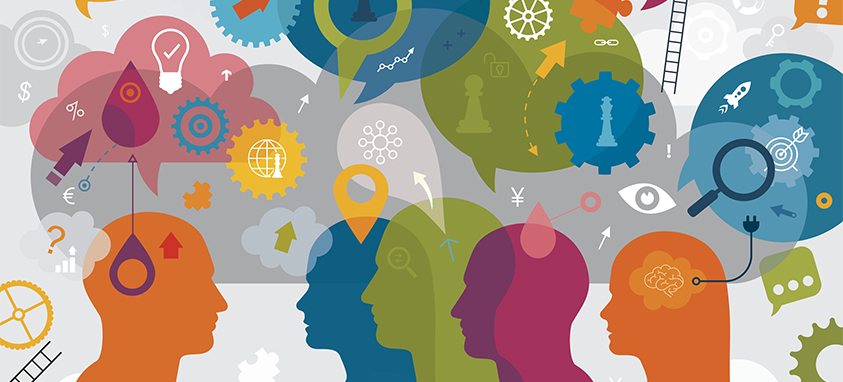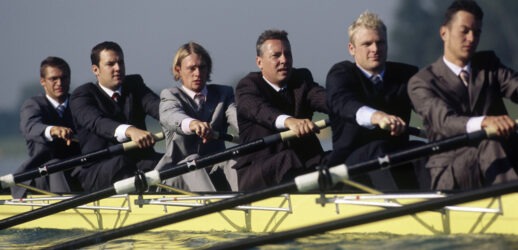Regardless of how many years of schooling you’ve completed or fancy degrees and titles you’ve earned, there is always more to be learned. As a meeting professional, the goal is to ensure that all attendees are gaining knowledge at your conference to make their dedicated time worthwhile.
The way to achieve this is not necessarily seating everyone on uncomfortable folding chairs in a bland ballroom as a presenter delivers a lengthy monologue. Realistically, how much will be retained, or will attendees be fiddling with their smartphones to stay alert? It wouldn’t be surprising to catch a few people hoping to go unnoticed as they drift off into la la land or take a power nap.
“As learners, 70 percent of job knowledge is acquired through experience, immersive workshops, case studies and simulated exercises,” explains Tonya Almond, vice president of knowledge and experience design for Professional Convention Management Association (PCMA). “Typical retention rate from traditional learning styles ‘listen to the lecture’ is five percent.”
To become a more effective planner, it may be good to take one step back and become the student. Classes taught by the Disney Institute offer professional development courses on topics such as leadership excellence and employee engagement. Many of these methods and tactics can be applied when you step back into your role as the teacher or facilitator.
One Size Fits All
There are many types of learners—tactile, visual, auditory—to name a few. However, it turns out the fundamentals of learning are actually pretty universal. “While one may think that demographics may play a part in the consumption and understanding of content shared, the statistics are demonstrating that a highly engaging and interactive meeting is of benefit to all generations, professions and skill sets,” Almond says. “New research suggests that it’s not just about changing the learning activity, but also about the timing of the activity.”
“I am a learner who best learns when I have a chance to see it and touch it and do it, so for me that was a very valuable part of it,” Ruth P., president and CEO of a non-profit, says in a video testimonial of her Disney Institute experience.
Many people find that writing notes commits information to memory. Mona Desai, head of special events at Peerspace, recommends providing every attendee with a notebook and pen to enable them to take notes and write stimulating follow-up questions as they think of them. She also suggests booking a visually appealing venue that is more unique than the typical hotel conference room. Some examples she provides are buying out an architecturally significant space or renting a venue with a beautiful city skyline view or discovering a chic room in a niche neighborhood of a major urban metropolis.
Choose Your Own Adventure
Think back to when you were in school. You were more likely to retain maximum information on subjects aligned with your personal interests. The same holds true in the meetings world. Surfing your personal social media feeds during a boring meeting can be a distraction and detract from learning, but social media can also be used as a very powerful tool to maintain and build engagement amongst attendees.
Metrics collected by polling attendees on outlets such as Twitter and Facebook can steer the keynote speaker in a certain direction, for instance. Think of it as a virtual remote control. “Preparing the speaker to leverage feedback from the audience in order to change the presentation…embraces the learner in a personalized way,” Almond says. “Speakers who prepare to speak this way often gain as much from the audience participation as the audience themselves!”
“For presentations and panels, we recommend giving people the freedom to Tweet their takeaways and favorite sound bites so they can get feedback from others and potentially help someone who hadn’t considered the subject in that way,” says Desai. “We also find this surfaces more relevant questions that someone may have been afraid to ask if the presenter was just passing a mic around.”
Lunch and Learn
Invite experts to a meal and give conference participants the freedom to select at registration which topical table they’d like to sit at for stimulating conversation. These yummy breakout sessions “drive a deeper connection with the subject matter…and empowers the audience to participate in the session interactively, which heightens retention of content and enhances learning,” Almond says.
Desai adds that food trucks and interactive food stations serving s’mores, burritos and sushi can spark great opportunities for conversation, and therefore learning from one another.
Lead by Example
Meeting Professionals International (MPI) is experimenting with a new method to stimulate live learning at their World Education Congress (WEC) from June 2-5 at Indiana Convention Center in Indianapolis. Implementing EventCanvas.org Foundation’s flow chart of event design, MPI plans to have four connected WEC Villages, each with a specific theme: experiential design, innovation, leadership and social.
Eighty simultaneous education sessions will be taking place throughout the open floor plan villages versus enclosed meeting rooms. WEC Experience Coaches will help to scope out the agenda best suited for each attendee and pep rallies will get attendees amped up at beginning and end of each day.
“The Indiana Convention Center is the perfect venue for us [to] try our new concept of villages and open space learning,” Darren Temple, chief operations officer of MPI, says. “We are excited about WEC18, which promises to be unlike any other event experience.”
Seating Means Business
Meeting and hospitality professionals need to take chairs seriously. There are hours upon hours of sitting during meetings and conferences. Attendees who are uncomfortable will get fidgety and be concentrating more on their discomfort than the meeting. Desai says that, whenever possible, planners should seek out a venue that has soft, plush couches and cushioned furniture, or find a vendor to rent from.
When selecting seats for the amphitheater at Boston’s Seaport Hotel and World Trade Center, vice president and general manager James Carmody played a game of musical chairs before selecting a seat that he feels can be comfortably sat in for six to seven hours. “[We] evaluated 14 different chairs,” he tells us. “I find sitting in a meeting for any length of time I almost get into a catatonic state.” According to Fishbrook Design Studio, the hotel installed seats from Italian manufacturer Poltrona Frau that are upholstered with a lush, custom fabric.





